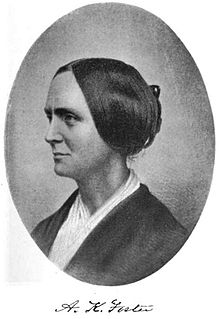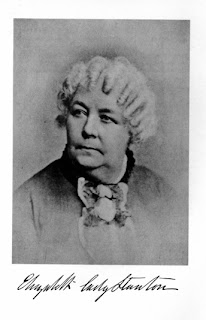About Our Blog
- heiresslove19
- This blog was created by Alia Bennett and Catalina Echeverri for our Technology Project.It is our personal job to educate you about the women's rights movement and the numerous fights that had to occur for women to gain equal rights. Hopefully by the end of this blog, you will have learned something new.
Monday, May 30, 2011
Sunday, May 29, 2011
William Lloyd Garrison
Born in 1805, William Lloyd Garrison has made many achievements in the anti slavery and women's rights acts. He made sure that he was heard nationally via newspapers,speeches, and works of literature he did. He published a newspapeer named "The Liberator",which he spoke eloquently about the anti slavery and womens rights movements.His inspiration came from his mother when he was young. This is because his family was forced into hard times then the Embargo act was passed and his father abandoning the family once it hit.He believes that wonen should be allowed to participate in the Anti-slavery society, and should not be opressed to men.
Ralph Waldo Emmerson
Surrounded by strong women since childhood, Ralph Waldo Emmerson was inspired by his mother,sisters, and aunts. His father died when he was at a young age,which solidified his admiration for women. He gladly signed the Declaration of Principles with Lucy Stone. Although he could not attend the Ntional Womens rights convention, he made many speeches honoring the movement. He explained that if women could not vote, then thy didnt have to pay taxes. He also published books on how men and women should be treated equally.
Lucretia Mott
She was born in Nantucket, Massachusetts, on January 3rd,1793. When she was a child, she went to a boarding school until she became a teacher at her same school. Her interese in women's rights was when she realized that at the same school, the male workers were being paid double than the female workers. When marrying her husband,James Mott, She bacame a Quaker minister. The couple were very opposed to the slave trade and anti-semetic acts. In 1848, she traveled with Elizabeth Cady Stanton and Lucy Stone to England to attend the anti-slavey convention. There, she weas not allowed to speak,simply because they were women. They went back to the United States,they organized the American Equal Rights Association. This organization gave woices to the opressed citizens such as women and african- americans.
Abby Kelly Foster
She was born Jan. 15, 1810, and died Jan. 14, 1887 in Worcester, Massechusetts. She became active in the Female Anti-Slavery Society in the 1830s, and in 1838 she helped William Garrison organize the New England Non-Resistance Society. Her career as a political lecturer brought her national fame ,because she addressed mixed audiences,including: men,women, African americans, and whites. In 1845 she married Stephen S. Foster (1809 – 81), a prominent abolitionist who joined her lecture tour. In the 1850s she added temperance and women's rights to her lecture topics.
Lucy Stone
She was born near West Brookfield, Mass., on Aug. 13, 1818. She Disagreed with her father's belief that men should be dominant over women.With this, Lucy undertook to educate herself and was graduated from Oberlin College in 1847.She was the first woman in Massachusetts to earn a college degree. She toured the country, lecturing against slavery for the Anti-slavery society and also advocating equality for women. She was an organizer of the first national women's rights convention held in Worcester, Massechusetts, in 1850.She then focused on winning equality for women, generally through legislation, and often in vain. She helped organize the American woman's suffrage association in 1869. finally, she died on October 18, 1893 and she was the first person and woman in New England to be cremated.
Saturday, May 28, 2011
Susan B. Anthony
Susan B. Anthony was born February 15, 1820 in Adams, Massachusetts. She was brought up in a Quaker family with long activist traditions. Early in her life she developed a sense of justice and moral justice .After teaching for fifteen years, she became active in the anti-alcohol movement. Because she was a woman, she was not allowed to speak at antI-alcohol movement rallies. This experience, and her friendship with Elizabeth Cady Stanton, led her to join the women's rights movement in 1852. Soon after she dedicated her life to woman suffrage.
Ignoring opposition and abuse, Anthony traveled, lectured and canvassed across the nation for the vote. She also campaigned for the abolition of slavery, women's right to their own property and earnings, and women's labor organizations. In 1900, Anthony persuaded the University of Rochester to admit women into the university.
Ignoring opposition and abuse, Anthony traveled, lectured and canvassed across the nation for the vote. She also campaigned for the abolition of slavery, women's right to their own property and earnings, and women's labor organizations. In 1900, Anthony persuaded the University of Rochester to admit women into the university.
Friday, May 27, 2011
First National Women's Rights Convention
In the late spring of 1850, those who had taken up the cause decided to hold a national convention to test the proposition that a political movement for woman's rights could garner support from around the country. The question was: Would anyone come to such a gathering? Woman's rights pioneers such as Elizabeth Cady Stanton, Susan B. Anthony, Lucy Stone, Abby Kelley, and Lucretia Mott were not satisfied with just having one convention. Since their discussions and requests had generated a lot of discussion and publicity, these ladies decided to host yet another convention. These women were not alone as male reformers as Ralph Waldo Emerson, Bronson Alcott, and William Lloyd Garrison were there to offer support.
On October 23rd, the convention took place at Brinley Hall in Worcester, Massachusetts. The New York Tribune reported that "above 1,000 people were present, and if a larger place could have been had, many more thousands would have attended."The goal was to create a national organization and a plan of action. The need for equal rights for women was addressed repeatedly by numerous speakers.
Although a few newspapers, such as the Massachusetts Spy, had positive things to say about the convention, most reviews were disapproving and hateful. However, even the negative attention that was directed to the woman's rights movement helped win converts to the cause. National conventions begun to occur more and more frequently, with one being held yearly, through 1860.
Elizabeth Cady Stanton
Women's rights activist, feminist, editor, and writer. Born on November 12, 1815, in Johnstown, New York. She was the daughter of a lawyer strongly preferred her brother . She graduated from the Emma Willard's Troy Female Seminary in 1832 and then was attracted to the abolitionist, temperance, and women's rights movements. During the Civil War Elizabeth Cady Stanton concentrated her efforts on abolishing slavery, but afterwards she became even more outspoken in promoting women suffrage. In 1868, she worked with Susan B. Anthony on the Revolution, a militant weekly paper. The two then formed the National Woman Suffrage Association (NWSA) in 1869. She was the NWSA’s first president for 21 years.At that time the organization merged with another suffrage group to form the National American Woman Suffrage Association. Stanton served as the president of the new organization for two more years until she retired her position.She called for an amendment to the U.S. Constitution giving women the right to vote.
Declaration of Sentiments
During this convention, Stanton drafted what she called the "Declaration of Sentiments". This declaration took some of the same principles from the Declaration of Independence and geared them towards women's rights. It contained grievances and resolutions presented by the women.
The Declaration of Sentiments was signed by 100 people (68 women and 32 men).
The Beginning.
The Women's Rights Movement officially started on July 13, 1848.On that day in upstate New York, a young woman by the name of Elizabeth Cady Stanton was invited to tea with four women friends.The conversations spawned the idea of equality for women. They planned on hosting a convention discussing women's rights (or the lack therof).The convention took place at the Wesleyan Chapel in Seneca Falls on July 19 and 20, 1848.This convention would later be called the First Women's Rights Convention.
Subscribe to:
Comments (Atom)








